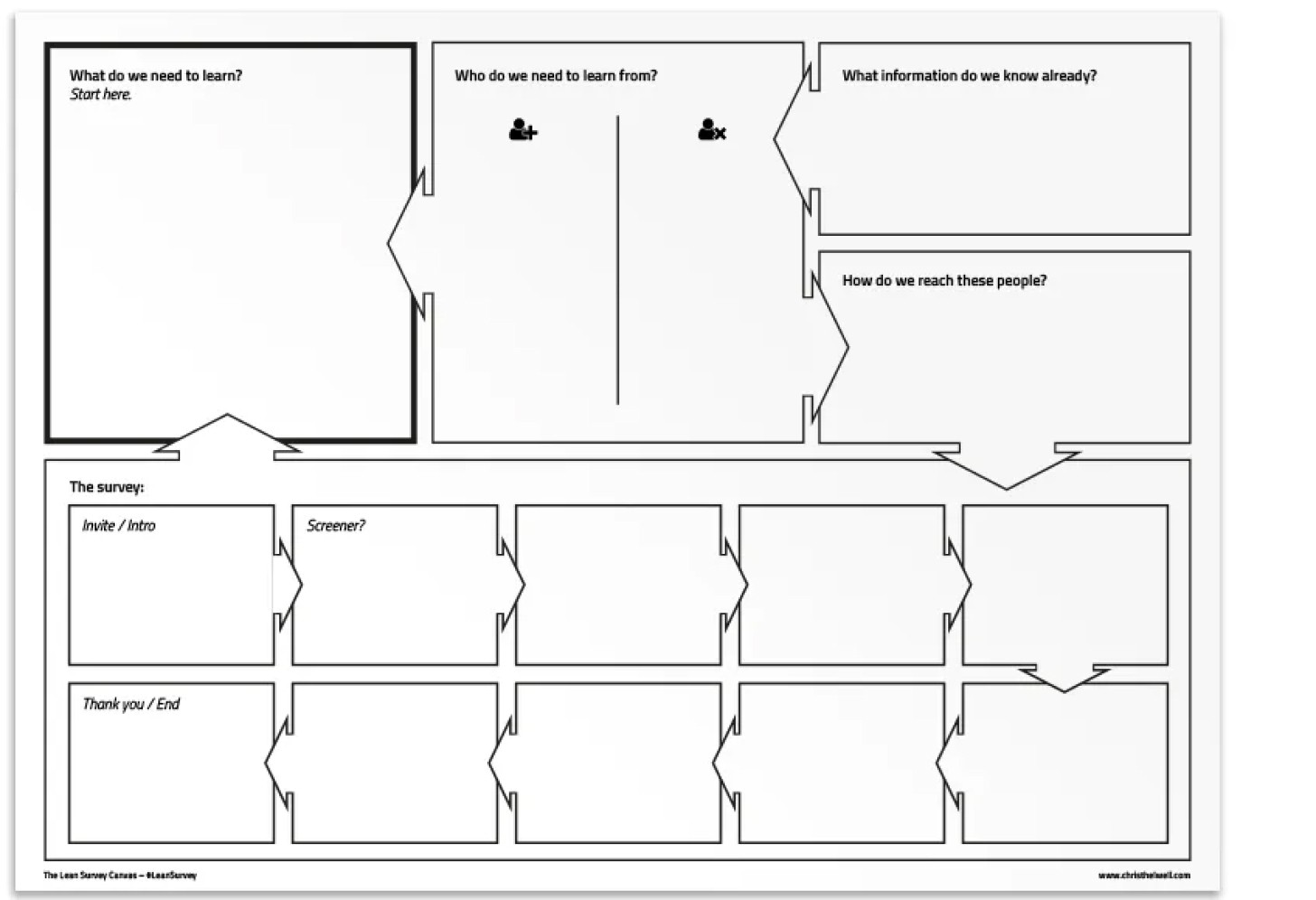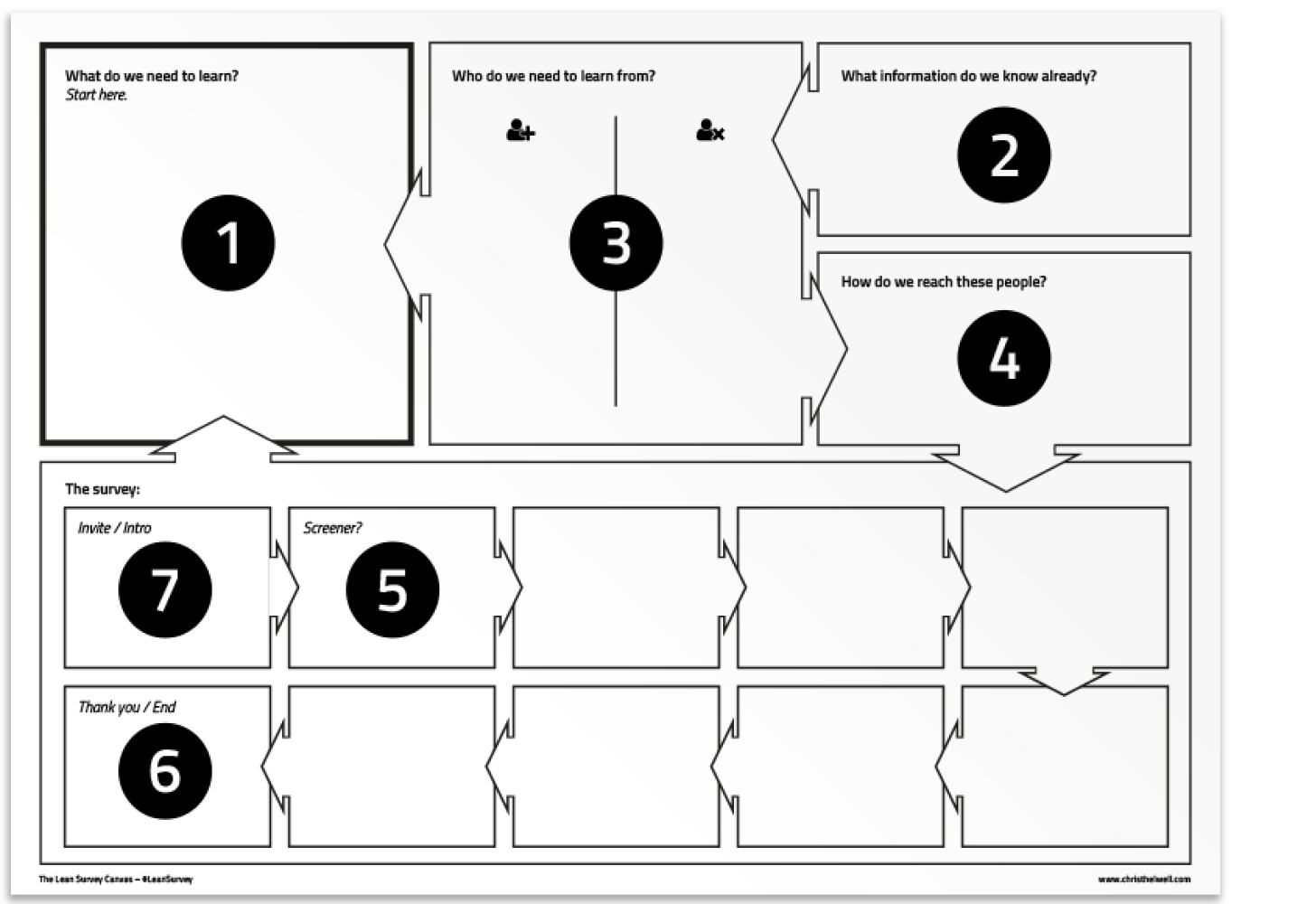Unpacking Chris Thelwell’s Lean Survey Canvas
Survey Methods

Maria Correa
Sep 28, 2023
Surveys are incredibly valuable tools for businesses and researchers alike. They help us understand what our users think, how a product is performing, or even what features people might like to see in future updates. However, have you ever wondered how you can make your surveys more effective, faster, and more insightful? Okay, so today we want to present you the Chris Thelwell’s Lean Survey Canvas, which is a brilliant methodology designed to refine the survey-making process into a lean, mean, insight-gathering machine.

Why Surveys Matter, Really!
Before we dive into the Lean Survey Canvas, let's underscore why surveys are indispensable. The answers lie in the valuable insights they offer—these could vary from understanding user behavior to assessing the user-friendliness of a website or product. However, the magic only happens when the survey is well-crafted. A poorly designed survey can take you into a state of confusion, giving you distorted data that doesn't fulfill your actual purpose.
What is the Lean Survey Canvas?
The Lean Survey Canvas by Chris Thelwell is more than just a template; it's a team tool aimed at making your survey process faster, smarter, and focused. With this tool, you can create a concise, purpose-driven survey (usually under 8 questions) in a couple of hours.
The Lean Survey Canvas streamlines the whole process by allowing team members to collaborate and focus on a single source of truth—your ultimate survey objective. By focusing on the insights or hypotheses you want to confirm, it shifts the attention from the normal task of writing questions to the more important question: What do we want to learn?

7 Steps to Survey Recipe
Step 1: Define the Objective
This is the core of your survey. You should have a crystal-clear idea of why you are conducting this survey. Is it to understand user behavior? To test a new design direction? Or to assess a website's usability? Everything else in your survey should align with this objective.
Step 2: Gather Existing Knowledge
Before you start reinventing the wheel, consider what information you already have. Utilize existing data, previous survey results, or analytics to lay a foundational knowledge base. Make action plans to gather any missing data.
Step 3: Identify Your Target Audience
Knowing whose feedback you need is crucial. Identify the ideal characteristics of your survey participant and, equally important, who you don't want to participate.
Step 4: Choose Distribution Channels
Of course, here, we recommend you use pop-ups on your website or product. Emails don’t guarantee that you will receive an answer. Pop-up surveys are immediate and just take a few seconds of the users. Start improving your product with user feedback by creating your first survey for free.
Step 5: Draft and Refine Questions
Start brainstorming all the questions that come to mind, but make sure to filter them down to those directly linked to your objective. Remember that people don’t want to spend too much time doing this. The response rate can drop down with every additional question, so aim for about 4-5 questions for maximum effectiveness.
Step 6: Say "Thank You"
After the user has taken the time to provide valuable insights, thank them. If you're offering incentives, this is the point to mention how they can claim them.
Step 7: The Invite/Intro
Your intro should, in a brief manner, tell users what to expect from the survey, how long it will take, and why it's essential for them to participate.
Pro Tips and Best Practices
Keep it Short: Less is more. Aim for higher response rates by keeping your survey concise.
Create a Logical Flow: Group similar questions together to make it easier for the respondents.
Be Clear and Unambiguous: Confusing language can yield unreliable data.
Open-Ended vs. Closed Questions: Open-ended questions offer deeper insights but use them less. They require more effort from users and can be challenging to analyze.







